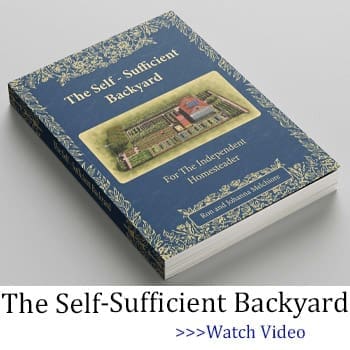For most of us, electricity is as essential as air. It powers our mornings, fills our homes with light, and connects us to the wider world. But for the Amish, life without electricity isn’t a hardship — it’s a deliberate choice. Their quiet refusal to rely on modern power isn’t about rejecting progress; it’s about preserving faith, family, and community from the noise of dependency.
So, do the Amish use electricity? The answer is both yes and no, depending on how you define it.
Why the Amish Choose to Live Without Public Power
The Amish decision to avoid electricity from the public grid comes from a deep-rooted desire to stay separate from the world. In the early 20th century, as rural America was wired for power, the Amish saw something subtle yet dangerous in those lines — connection not just to energy, but to outside influence.
By refusing the grid, they limited worldly distractions like television, radio, and now smartphones — things that could erode their spiritual discipline and pull their hearts away from faith. Their belief in Gelassenheit — a spirit of humility, simplicity, and community — means avoiding anything that promotes pride, vanity, or division.
In short, rejecting public electricity isn’t about being “anti-technology.” It’s about staying grounded in values that have survived for centuries.
What the Amish understood early on is that every connection comes with a cost. For them, that cost wasn’t measured in dollars, but in freedom. When you depend on the grid, you depend on the system — and when the system fails, so does your independence.
When the Amish Do Use Electricity
What surprises most outsiders is that the Amish aren’t completely “off” electricity. They use it — just not the way we do.
Instead of plugging into the public grid, Amish families often power specific tools or systems using off-grid alternatives like:
- 12-volt batteries (similar to car batteries) for lighting or fans
- Propane or diesel generators for refrigerators, water pumps, or saws
- Solar panels in certain communities for farm operations or workshops
- Compressed air and hydraulics to power heavy tools and machinery
Each community, or district, decides what is acceptable through a local code called the Ordnung. Some are stricter, allowing almost no mechanical tools, while others permit carefully chosen technologies that support work but not luxury.
For example, an Amish carpenter might use an air-powered saw connected to a diesel compressor — efficient and powerful, yet disconnected from modern convenience. A farmer might run a milking machine powered by a generator but record his production by hand.
The key difference lies in control. The Amish generate and maintain their own power, on their own land, without relying on corporations or government utilities.
The Balance Between Tradition and Adaptation
The Amish relationship with technology isn’t frozen in time. It evolves slowly, guided by collective wisdom and cautious testing. While most of us adopt new gadgets overnight, the Amish may spend decades discussing the moral and practical impact of a single device.
This patience has kept their communities stable in a world addicted to convenience. Without screens or endless notifications, their lives revolve around people, not pixels. Their evenings are filled with conversation, their days with purpose. Their homes glow with oil lamps instead of LEDs — and somehow, they’ve preserved something the rest of the world has lost: peace.
Interestingly, some Amish now use solar panels — not as a shortcut to comfort, but as a tool for sustainability. It’s not rebellion against tradition; it’s adaptation that fits their principles: self-reliance without dependency. They accept tools only if they strengthen community and faith, never if they weaken it.
Lessons from a Life Beyond the Grid
The Amish lifestyle reminds us that electricity, while convenient, can make us fragile. Every device, every bill, every outage ties us tighter to a system we can’t control. When it falters, we falter too.
But for the Amish, a blackout means nothing. Their water still flows, their stoves still heat, and their homes stay warm under the steady glow of lanterns. They’ve built resilience by limiting dependency, not expanding it.
Their choices challenge the modern idea of “progress.” They remind us that real security doesn’t come from technology — it comes from self-reliance, community, and the ability to endure change without panic.
Practical Takeaway: How to Apply Amish Wisdom at Home
You don’t have to live in an Amish settlement to adopt their wisdom. Anyone can take small steps toward independence and simplicity:
- Start small with off-grid tools. Try using manual kitchen tools, oil lamps, or solar lanterns during outages.
- Invest in sustainable systems. Rainwater collection, solar panels, or wood stoves reduce dependence on fragile grids.
- Simplify energy habits. Unplug unused devices, dry clothes outdoors, and cook with minimal electricity.
- Reconnect with your community. Trade skills, share tools, and rebuild the neighborly support we’ve lost.
- Focus on values, not gadgets. Ask yourself: Does this tool make me more capable — or more dependent?
You don’t need to abandon electricity to live like the Amish — you just need to control it instead of letting it control you. Every unplugged moment is a quiet act of freedom.
The Forgotten Power of Simplicity
The Amish life is not about deprivation — it’s about clarity. By living intentionally, they’ve built resilience that most of us only think about when the power goes out. Their wisdom offers a timeless reminder: independence isn’t found in having everything. It’s found in needing less.
Learn More in The Amish Ways Book
If you’ve ever wondered how to live closer to nature, work with your hands, and depend less on fragile systems, The Amish Ways Book is your guide.
Inside, you’ll discover:
- How the Amish cook, preserve, and store food without electricity
- Old-world building methods that still outperform modern designs
- Natural remedies and herbal healing techniques used for generations
- Simple daily habits that cultivate peace, patience, and resilience
These are the same time-tested methods that keep Amish families thriving without fear of power outages or supply shortages.
You don’t need to join their community to learn from their wisdom — you just need the willingness to live by their principles: work hard, waste little, and rely on yourself.
👉 Explore The Amish Ways Book here — and start building a life that stays strong when the grid, and the world, go dark.
Why Do Amish Women Remove Their Teeth? The Sad Truth Behind The Practice
How the Amish Can Bread in Mason Jars (Video)
10 Amish Canning Recipes You Should Know About
12 Amish Farming Secrets Every Homesteader Should Know
11 Items To Look For At An Amish Market














